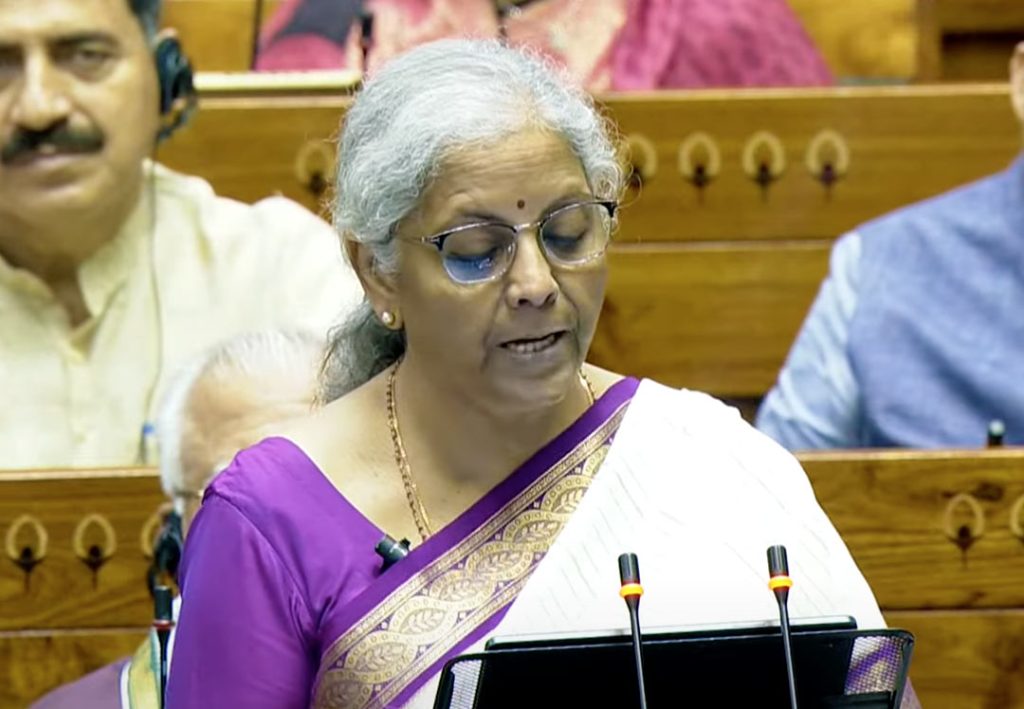
As India strives to become a $5 trillion economy by 2027, the Union budget appeared to be a strategic roadmap outlining the government’s vision for sustainable growth and development.
Meanwhile, the NDA-ruled states Andhra Pradesh received Rs. 15,000 Cr towards developing its new capital, Amaravati, and Bihar received Rs. 26,000 Cr towards developing its road connectivity.
Focus on Fiscal Discipline
The budget reflected a prudent approach towards fiscal consolidation, aiming at reducing the fiscal deficit to 4.5% of GDP by FY26. The revised estimates for FY 2023-24 indicate a provisional gross domestic product (GDP) growth of 8.2%, setting a positive tone for the economic outlook. The government’s commitment to maintaining a fiscal deficit of 5.9% in FY24, despite a reduction in the fiscal deficit headroom, underscores the focus on fiscal discipline.

Key Highlights
Tax Reforms: The budget introduced significant changes to the income tax structure, including an increase in the standard deduction to ₹75,000 from ₹50,000. This move is aimed at providing relief to taxpayers while boosting consumption.
Manufacturing and Infrastructure: The government has continued its focus on manufacturing, emphasizing job creation and enhancing ease of doing business. The introduction of a credit guarantee scheme for MSMEs in the manufacturing sector is expected to facilitate access to term loans without collateral or third-party guarantees.
Education, Employment, and Skilling: A substantial allocation of ₹1.48 lakh crore for education, employment, and skilling reflected the government’s commitment to human capital development. The budget also introduced a scheme to incentivize job creation in the manufacturing sector, linked to the employment of first-time employees.
Ease of Doing Business: The budget outlined initiatives to improve the ease of doing business in India, including the establishment of an integrated tech platform to enhance outcomes under the Insolvency and Bankruptcy Code (IBC).
Infrastructure Development: The budget prioritized infrastructure development, enhancing air connectivity and developing a robust logistics network. The government plans to double the number of airports to 149 in the next decade and improve international trade facilitation.
Digital Economy and Technology: The budget underscored the importance of the digital economy and technology in India’s growth story. Initiatives such as the establishment of a mechanism to spur private-driven research at a commercial scale, supported by a financial pool of ₹1 lakh crore, aim to foster innovation and technological advancement.
Agriculture and Rural Development: The budget emphasized the government’s commitment to the welfare of farmers and rural communities. It outlined measures to boost agricultural productivity, improve rural infrastructure, and enhance farmers’ income.